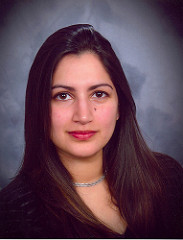Table of Contents
Definition / general | Terminology | Epidemiology | Sites | Clinical features | Grading | Diagnosis | Prognostic factors | Case reports | Treatment | Gross description | Microscopic (histologic) description | Microscopic (histologic) images | Cytology description | Cytology images | Positive stains | Negative stains | Electron microscopy images | Differential diagnosisCite this page: Bhaijee F, Akhtar I. Well differentiated neuroendocrine tumor. PathologyOutlines.com website. https://www.pathologyoutlines.com/topic/esophaguscarcinoid.html. Accessed November 29th, 2024.
Definition / general
- Well differentiated epithelial neoplasm with prominent neuroendocrine differentiation
- Pathologic spectrum from low grade neuroendocrine tumor (carcinoid, atypical carcinoid) to high grade neuroendocrine carcinoma (small or large cell carcinoma)
Terminology
- Synonym: neuroendocrine tumor (low grade) = carcinoid tumor, atypical carcinoid tumor
Epidemiology
- Extremely rare in esophagus: < 50 reported cases
- 0.002% of all carcinoid tumors
- Wide age range: 30 - 82 years, average age 60 years
- M:F = 6:1
Sites
- Distal esophagus
Clinical features
- Usually incidental / unexpected finding on radiologic studies or upper GI endoscopy
- Dysphagia is most common symptom
- Carcinoid syndrome is rare
Grading
- Grade 1 (carcinoid): < 2 mitoses/10 HPF or < 2% Ki67 index
- Grade 2 (atypical carcinoid): 2 - 20 mitoses/10 HPF or 3 - 20% Ki67 index (UpToDate: Classification of Neuroendocrine Neoplasms GI Tract [Accessed 26 February 2019])
Diagnosis
- Endoscopic biopsy
Prognostic factors
- Mitotic rate and Ki67 index determine grade
- Low grade lesions have favorable prognosis
Case reports
- 54 year old man with atypical carcinoid of esophagus (Ann Thorac Cardiovasc Surg 2002;8:302)
Treatment
- Surgical resection
Gross description
- Polypoid or ulcerated mass on upper endoscopy
Microscopic (histologic) description
- Well differentiated (low grade) tumor
- Uniform, small, bland tumor cells in solid, trabecular, gyriform or glandular pattern
- May have Paneth cell differentiation
- Solid to cribriform growth
- Usually in lamina propria
Cytology description
- Low grade tumors:
- Flat sheets or loosely cohesive groups / cords of monotonously uniform plasmacytoid cells
- Eccentric nuclei, coarsely stippled (salt and pepper) chromatin, finely granular cytoplasm
Positive stains
- Keratins (e.g. CAM 5.2, AE1 / AE3)
- Neuroendocrine markers: synaptophysin, chromogranin, CD56, NSE
- Ki67 (essential for tumor grading - see above)
Negative stains
Differential diagnosis
- Atypical carcinoid
- Glomus tumor
- Paraganglioma
- Small cell (neuroendocrine) carcinoma









